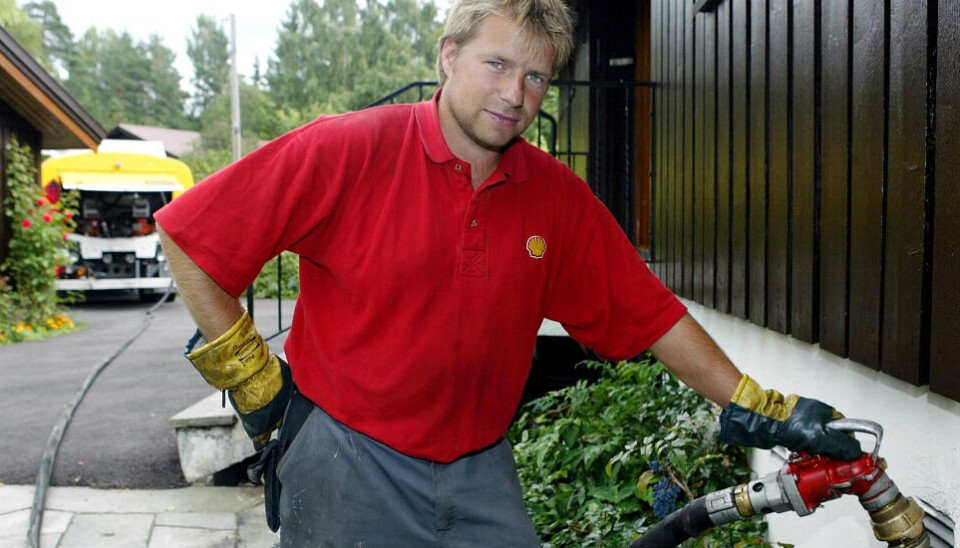THIS ARTICLE/PRESS RELEASE IS PAID FOR AND PRESENTED BY NTNU Norwegian University of Science and Technology - read more

Thousands of environmental bombs under Norwegian homes
Heating with oil in homes and commercial buildings is now banned in Norway. The storage tanks are supposed to be removed from buildings, but many people choose not to get rid of these environmental time bombs.

Heating with oil used to be quite common in Norwegian homes and commercial buildings. But this practice was banned at the beginning of 2020, with few exceptions.
Thousands of underground fuel storage tanks can still be found below Norwegian houses and in Norwegian gardens, which need to be removed as part of the country’s environmental policy.
“Fuel tanks that are no longer being used are required to be removed by professionals with special expertise in cleaning and emptying oil tanks,” says Ida Marie Henriksen, a postdoctoral fellow at NTNU’s Department of Interdisciplinary Studies of Culture.
Henriksen and Robert Næss, an associate professor from the same department, have investigated how Norwegian households dispose of their oil tanks – or rather why so many choose not to.
People have good reasons for choosing not to get rid of these environmental bombs, say the researchers, who offer advice to authorities on how to speed up the removal process.
Thousands of fuel tanks
No one knows exactly how many buried fuel tanks are still found in Norway. NRK (link in Norwegian), the Norwegian Broadcasting Corporation, pointed out in a 2021 report that 16 municipalities in Innlandet county had 3,700 oil tanks with “unknown status”. Norway has just over 350 municipalities.
“We don’t have any comprehensive register of how many fuel tanks are buried, since the municipalities oversee them,” says Næss.
By comparison, the United States, which has an active Underground Storage Tank programme designed to help remove and remediate leaking underground tanks, has an estimated 540,000 tanks that are regulated, of which 68 per cent are in compliance with US law. The country’s Leaking Underground Storage Tank programme has helped remove and remediate more than 1.9 million tanks since 1984.
According to oljefri.no (link in Norwegian), the owner who previously used the heating system is responsible for removing it. Municipalities are in charge of monitoring that this happens, and may demand to receive customer lists from companies that sold kerosene and heating oil. Fees could also come into play.
Homeowners cannot use a municipality’s lack of oversight as an excuse not to remove their fuel tanks. So why do so many Norwegians still choose not to remove them?
“This is one more situation where people with financial means find it easier to be environmentally friendly than those who don’t have a lot of money,” says Næss, “because there’s no question you need to have enough discretionary funds to voluntarily remove your fuel tank.”
Super expensive and support ended

“As best we can estimate, it costs between NOK 10,000 and 30,000 to remove a fuel tank,” says Henriksen.
This is a lot of money for many people. Previously, Norwegian households were able to receive financial support from the state through Enova to remove the fuel tanks, but this option disappeared once the ban went into effect on 1 January 2020.
“There are no longer any incentives for people to take action on their oil tanks. For people who don’t have a lot of money, digging up an old fuel tank is probably not at the top of their agenda,” says Henriksen.
So the researchers have developed advice for the authorities on how to make better headway with the work.
“Removing these potential environmental bombs that are often located in Norwegian yards can’t just be an individual responsibility. We have to take care of this collectively,” says Næss.
It cannot be up to each of us to do this, the researchers say.
“We have to do it together, and share the bill as well.”
Need more how-to knowledge
The researchers’ recent article in Norsk Sosiologisk Tidsskrift (Norwegian Journal of Sociology) outlines how 'de-domesticating' a certain type of technology can take place, and what is involved – such as having the time and financial resources – for people to take the active step of getting rid of outdated technology in an environmentally friendly way.
The researchers believe we need to develop comprehensive plans and introduce new strategies if we’re to convince people to dispose of technology that is neither energy efficient nor energy-friendly. Only in this way can greener technology be successfully implemented.
Researching new technology is important. But the article shows why studying how to get rid of outdated technology is also very relevant.
Reference:
Næss and Henriksen. Dis-domestication of technology: A case study of how Norwegian households phasing out private oil tanks (Av-domestisering av teknologi – en studie av hvordan norske husholdninger avvikler sine oljetanker), Norsk Sosiologisk Tidsskrift, 2022. https://doi.org/10.18261/nost.6.4.1 Abstract.
See more content from NTNU:
-
Why are pregnant women in Norway so worried?
-
Politics on Facebook: Populist parties choose divisive issues on purpose
-
Social media is connected to cyberbullying – but not how we thought
-
Forskere ved NTNU får nesten 24 millioner av EU for å lage nye strømomformere
-
This helps the youngest children enjoy school more
-
Can we tap the ocean’s power to capture carbon?





































